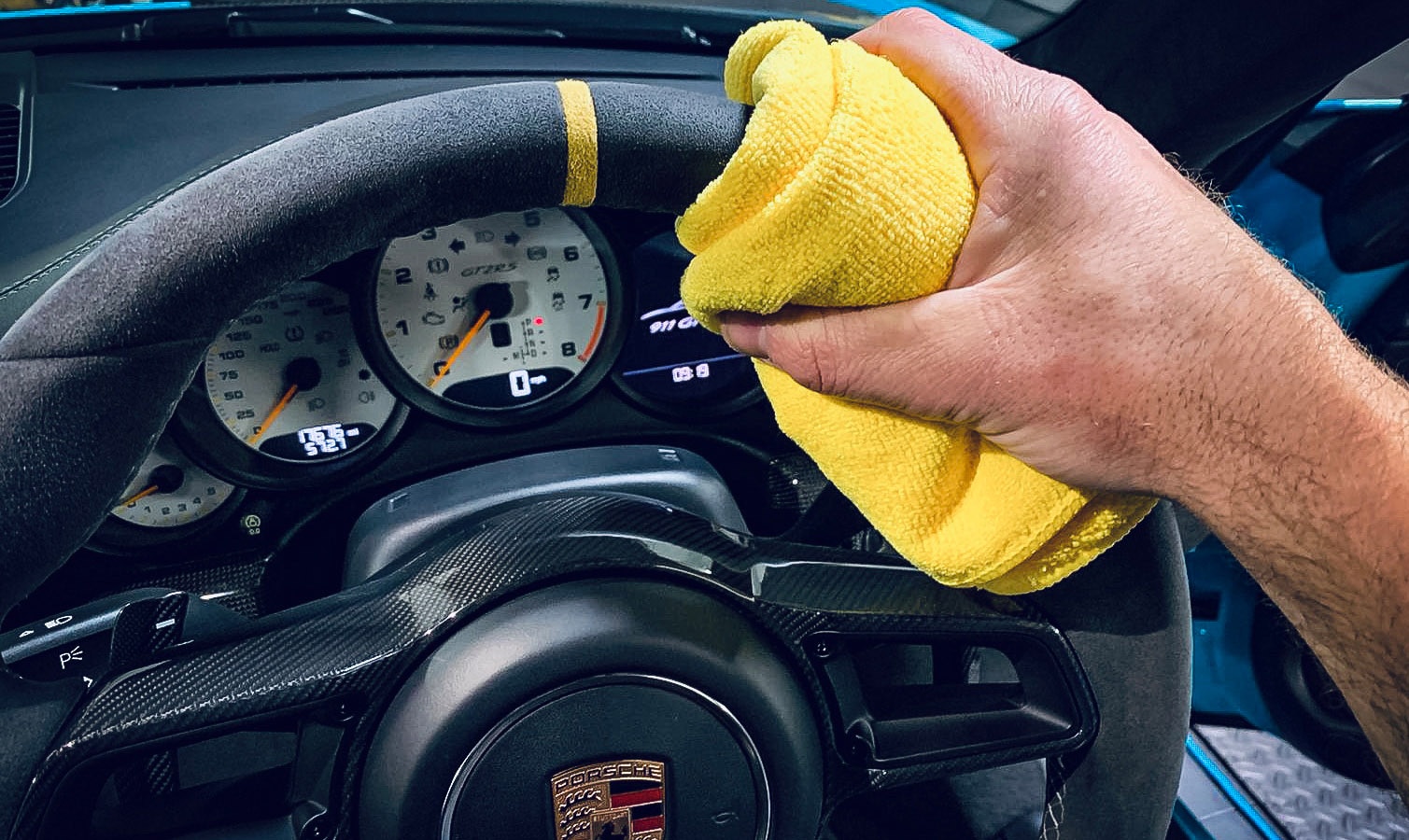How to Clean a Car's Suede Interior
Gentle care is the name of the game for this softest of interior materials.
 Porsche
Porsche
Suede and its synthetic counterpart Alcantara can be great-looking additions to any automotive interior, and their soft-to-the-touch character instantly adds class to upholstery, door panels, and dash panels. Taking proper care of these materials, however, requires a different approach from what's required for most other fabrics.
Suede and Alcantara Have Close to the Same Feel
Suede is made from animal hide, but unlike standard leather, it's sourced from the underside of the animal's skin. This is what gives it a much softer feel than traditional leather, with a very fine, almost fuzzy grain that can be felt when passing a hand over it.
Alcantara (and competitors such as Ultrasuede) can be thought of as artificial suede. The material is made out of polyester and urethane fibers and was originally developed in the 1970s. Alcantara is now the shorthand name used to describe many brands of faux-suede used on interior components.
Like suede, the material became popular as a seat insert, steering wheel wrap, and shift knob wrap, in part due to the additional grip its microfiber nature provides. Vehicles such as the Porsche 911 GT2 RS have utilized this aspect of the material.
Thanks to its low glare when installed on dashboards, Alcantara also found a home in motorsports. Unlike natural suede, Alcantara is notable for its flame-retardant properties in certain formulations, and it generally holds up to daily use better than suede.
Suede and Alcantara Can Be Difficult to Keep Clean
Suede and Alcantara are regularly used in areas of a vehicle's cabin that contact a driver's hands, such as the steering wheel and shift knob. This can pose a problem, as neither the natural nor the artificial material is particularly resistant to wear. Both are ultra-absorbent and easily pick up oil and grime, leading to a flattened-out look in areas that are constantly being touched or exposed to dirt.
Alcantara and suede that are not regularly maintained can also gradually lose their ability to grip, robbing them of their practical advantage over traditional leather.
How to Care for Suede and Alcantara
Due to their having a soft nap — the term used to describe the grainy fluffiness of suede and Alcantara — these materials must be cleaned more gently than standard leather. This means avoiding harsh chemicals, which rules out many traditional interior cleaners. You will also need to take care not to rub either material with too much force.
For suede, start by using a soft brush specifically designed to remove surface dust and dirt. This will also help fix any matting of the material by lifting up the fibers. Regular brushing will go a long way toward keeping suede looking fresh.
The next step is to try wiping with warm water and a microfiber towel, which often will be enough to remove all but the most stubborn stains. A suede cleaner, diluted with distilled water, will take care of dirtier suede. If necessary, rubbing alcohol can be used to blot out more persistent stains.
Alcantara is slightly less fragile when it comes to cleaning, but it's still important to be gentle. A specialized brush or microfiber will help restore nap, while warm water and an Alcantara cleaner should take care of any dirt.
Written by humans.
Edited by humans.
 Benjamin Hunting
Benjamin HuntingBenjamin Hunting is a writer and podcast host who contributes to a number of newspapers, automotive magazines, and online publications. More than a decade into his career, he enjoys keeping the shiny side up during track days and always has one too many classic vehicle projects partially disassembled in his garage at any given time. Remember, if it's not leaking, it's probably empty.
Related articles
View more related articles